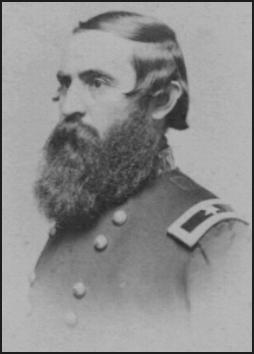William Wallace Burns facts for kids
Quick facts for kids
William Wallace Burns
|
|
|---|---|

William Wallace Burns
|
|
| Born | September 3, 1825 Coshocton, Ohio |
| Died | April 19, 1892 (aged 66) Beaufort, South Carolina |
| Place of burial | |
| Allegiance | United States of America Union |
| Service/ |
United States Army Union Army |
| Years of service | 1847–1889 |
| Rank | |
| Commands held | Philadelphia Brigade |
| Battles/wars | Mexican–American War American Civil War |
William Wallace Burns (born September 3, 1825 – died April 19, 1892) was an American soldier. He served in the Union Army during the American Civil War. He became a brigadier general, which is a high military rank. He was also one of the leaders of the famous Philadelphia Brigade.
Early Life and Military Training
William Wallace Burns was born in Coshocton, Ohio. His father, Joseph Burns, later became a U.S. congressman. William went to the United States Military Academy in 1842. This is a special school for training army officers. He finished his studies in 1847.
After West Point, he became a second lieutenant in the army. He served during the Mexican–American War, but he did not fight in any battles. Later, he worked at different army bases in the western United States. In 1849, he got married in Arkansas.
From 1854 to 1856, he helped recruit new soldiers in Philadelphia. He also worked as a Quartermaster in Florida. A Quartermaster is an officer who makes sure soldiers have enough supplies. This was during the Third Seminole War (1856–1857). After that war, Burns joined a group sent to Utah in 1857. Their job was to calm down some unrest there. In 1858, he became the Chief Commissary of Subsistence. This meant he was in charge of food and supplies for the army. He held the rank of captain.
Fighting in the Civil War
When the Civil War started, Burns was at Fort Smith, Arkansas. He just barely escaped capture when Confederate soldiers took over the fort in April 1861. He went back to Ohio. Soon after, he became the Chief of Commissary for Major General George B. McClellan. This happened in May 1861.
Burns helped McClellan during his successful campaign in western Virginia. In August 1861, Burns was promoted to Major. But Burns wanted to lead soldiers in battle. He got his wish that fall. In September, he was promoted to Brigadier General of Volunteers. In October, he took command of the Philadelphia Brigade. Their previous leader had died in a battle.
Burns led the Philadelphia Brigade for about a year. This included McClellan's Peninsular Campaign in 1862. His brigade played a key role in the Battle of Savage Station on June 29. This battle was fought to protect the Army of the Potomac as it retreated. Burns was hurt in the face, but he and his brigade stopped a Confederate attack. This allowed the Union army to keep moving back safely.
His brigade also helped a lot in the Battle of Glendale the next day. They stopped another Confederate attack. This attack had already defeated one Union division. Burns's men helped prevent the Union army from being split in half.
Earlier in the campaign, Burns made another important move. During the Battle of Fair Oaks (May 31), he ordered his men to help an artillery group. Their cannons were stuck on a shaky bridge over a flooded river. Burns's soldiers helped move the cannons. This allowed the cannons to be ready in time. They helped stop the last Confederate attack of the day. A shot from one of those cannons also badly wounded Confederate General Joseph E. Johnston. He was later replaced by Robert E. Lee.
Burns's facial wound became infected. He had to miss several months of fighting to get better. In December 1862, he led a division during the Battle of Fredericksburg. After this, he moved to the Western part of the war. He thought he would be promoted to Major General. He hoped to lead a corps in the Army of the Cumberland.
However, Congress never approved Burns's promotion. He could not lead a corps without it. Burns believed that Secretary of War Edwin M. Stanton blocked his promotion. He thought it was because he supported General McClellan, whom Stanton disliked. There is no proof that Stanton actually did this. Burns decided to talk to President Abraham Lincoln directly. He resigned as a general in the Volunteer army. He hoped Lincoln would refuse his resignation and force Stanton to approve his promotion. But Lincoln accepted Burns's resignation without saying anything. This meant Burns had to go back to working in the Commissary department. He never led troops in battle again. He also never became a Major General.
After the War
Later, Burns became the chief commissary officer for different army departments. He briefly served as the military mayor of Charleston, South Carolina, in 1868. He was appointed on February 19, 1868.
In 1865, he received the honorary rank of brigadier general. He continued to work in the Commissary Department in Washington until 1889. He then retired from the army. At that time, his rank in the regular army was colonel.
William Wallace Burns is buried at Arlington National Cemetery.


